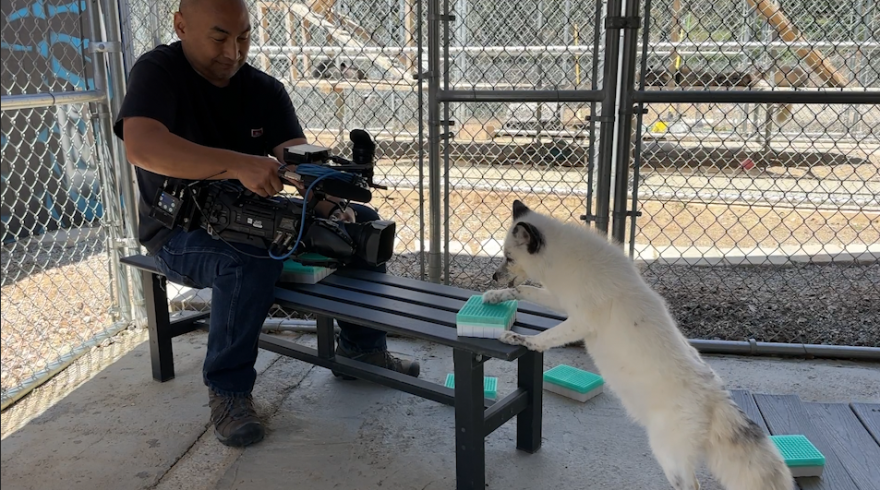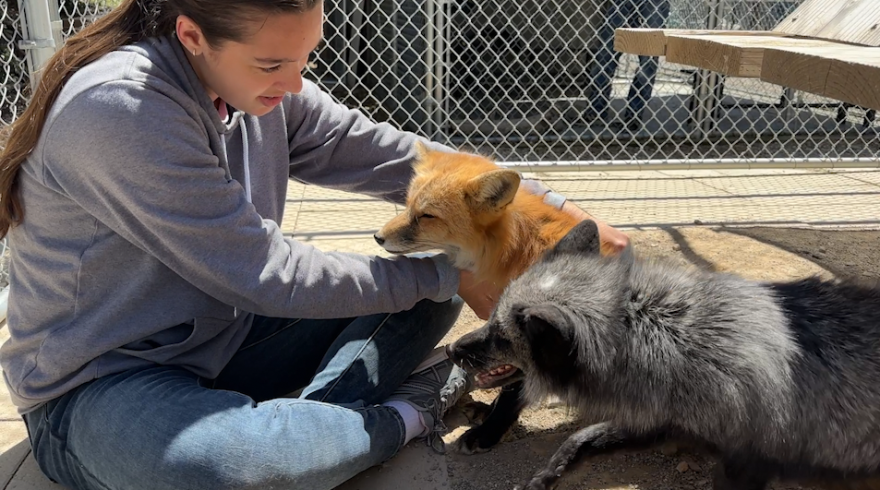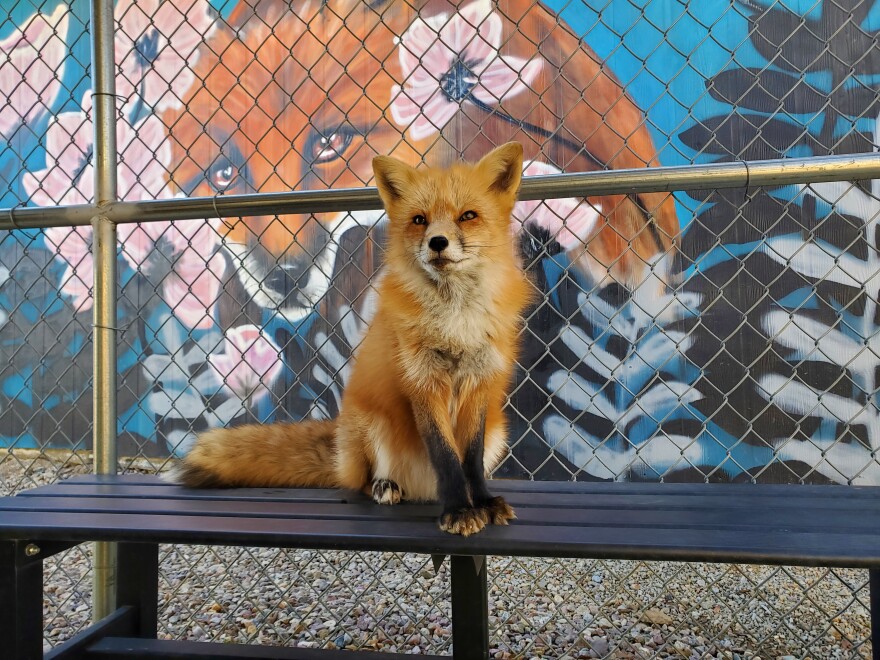For generations, their fur was worn on collars and coats and they were portrayed as sly, conniving, wily characters in popular culture.
But David and Amy Bassett want to change the perception of foxes. They want to show the world that foxes, although mischievous, have so much more to offer, including their potentially life-saving skills.

The Bassetts own and run the Judith A. Bassett Canid Education and Conservation Center in Santa Ysabel. They care for orphaned coyotes, New Guinea singing dogs, arctic and fur-farm fox rescues, a gray wolf and 14 Russian domesticated foxes.
Together with dog trainer Anita Cheesman, they are training Russian domesticated foxes to detect scents inside plastic boxes. With each positive detection, they are rewarded with a morsel of cheese. And the foxes are on the nose almost every time.
The Bassetts believe that this kind of nosework could be groundbreaking in natural disaster search and rescue efforts.
The Bassetts brought the first of the Russian domesticated foxes to their conservation center 10 years ago.
“And at that point, no one had ever brought one to the United States because they're in Russia,” said David Bassett. “Not only Russia, but Siberia Russia.“

Bassett said he was curious about their breeding.
“Were they really domesticated? Was it just a scam? Was it a gimmick? Either way, we knew we were going to give them a much better home than they would have had if they were left at the institute in Russia,“ he said.
The foxes were part of a Russian Domesticated Fox Program started by Soviet scientist Dmitry Belyaev in the 1950s. His goal was to recreate the evolution of gray wolf to domesticated pet dog, a process that took thousands of years. But, with foxes he wanted to do it in a matter of decades. The program has seen much success; the foxes evolved to behave more like dogs.
“They'd breed only the most friendly ones and then they do the same thing the next generation, year after year after year and then they found after about 10 generations or so they actually were getting more friendly,” Bassett said. “The foxes were excited to see people. They'd come up and wag their tails when a person would come in.”
Unlike a wild or fur farm-bred fox, these domesticated foxes are not timid, do not keep a flight distance, and resemble the behavior of human-loving dogs. They even enjoy being held, kissed and treated like babies.

So, why is this type of nose detection work so important to the Bassetts? The answer lies in the unique way they hunt.
“You'll see them walking slowly in the snow and their ears are going all over the place,“ Bassett said. “And also they stop and they hone in and they jump 6 feet in the air, spin around, hit the snow nose first, dig down 3 feet and come up with some kind of a rodent in their mouth. And so their hearing is very well attuned to hearing the types of frequencies of things under the snow.”
And while their noses are highly sensitive, and their hearing extraordinary, it is something else that seemingly sets them apart as hunters. It’s called magnetoreception, a trait whereby they can see the magnetic field of the earth and align their bodies for precision.
“So, we said, well, that works perfect for the avalanche rescue because someone is stuck under the snow and they’re kind of moving around and they are designed to detect that,” Bassett said.

The Bassetts said too many people see foxes as animals to be killed for their fur or for sport. They want foxes to be seen as creatures with a positive purpose. You can call it fox PR.
“If we can train them to do search and rescue work, to do avalanche rescue, boy would people see them in a different light,” said Amy Bassett. “If we actually had them seen as saviors and showing people their skill set and finding things underneath the ground, I think it would really give people a different perspective of them and be advocates to save them from trapping and fur farming.”
But first there are biological and geopolitical challenges. The Russian program was partially funded by the United States National Institutes of Health. But since the invasion of Ukraine, those ties have been cut. This means, and least for now, no more foxes can be imported into the United States.
“There are no other populations of these foxes, so if they go extinct, they're extinct,” said David Bassett.
The Bassetts said the foxes are also considered a source of pride and their genetics are intellectual property of the Russian government. So, each one is sterilized to discourage any breeding outside of the Russian program, which is still active today.

But, even through generations of domestication, the fox’s curious and mischievous nature stands true. They don’t have the same recall as dogs, which would be risky when releasing them to rescue people at this point.
“Yeah, they may run and find your people, but then they're going to go, OK, well, now we're going to go look for some mice, so see you later,” said David Bassett. “So, it's kind of like one rescue, one fox kind of a deal.”
The key, he said, is to train them as young pups. But it remains to be seen if the Bassetts will get access to pups anytime soon. Even so, they are holding out hope that we could one day see these animals saving human lives.
“When people say you can't teach a fox to do search and rescues, we say, just watch us. And it may not happen today, it may not happen tomorrow,” David Bassett said. “But, we haven't given up on it just because of what a wonderful thing it would be to put the foxes as the savior of humanity, if you will.”





